2026 GRAMMY Awards
Y'all, 38 artists and 70 GRAMMY nominations is BONKERS!! Our MAX/SET artist partners absolutely crushed it this year.
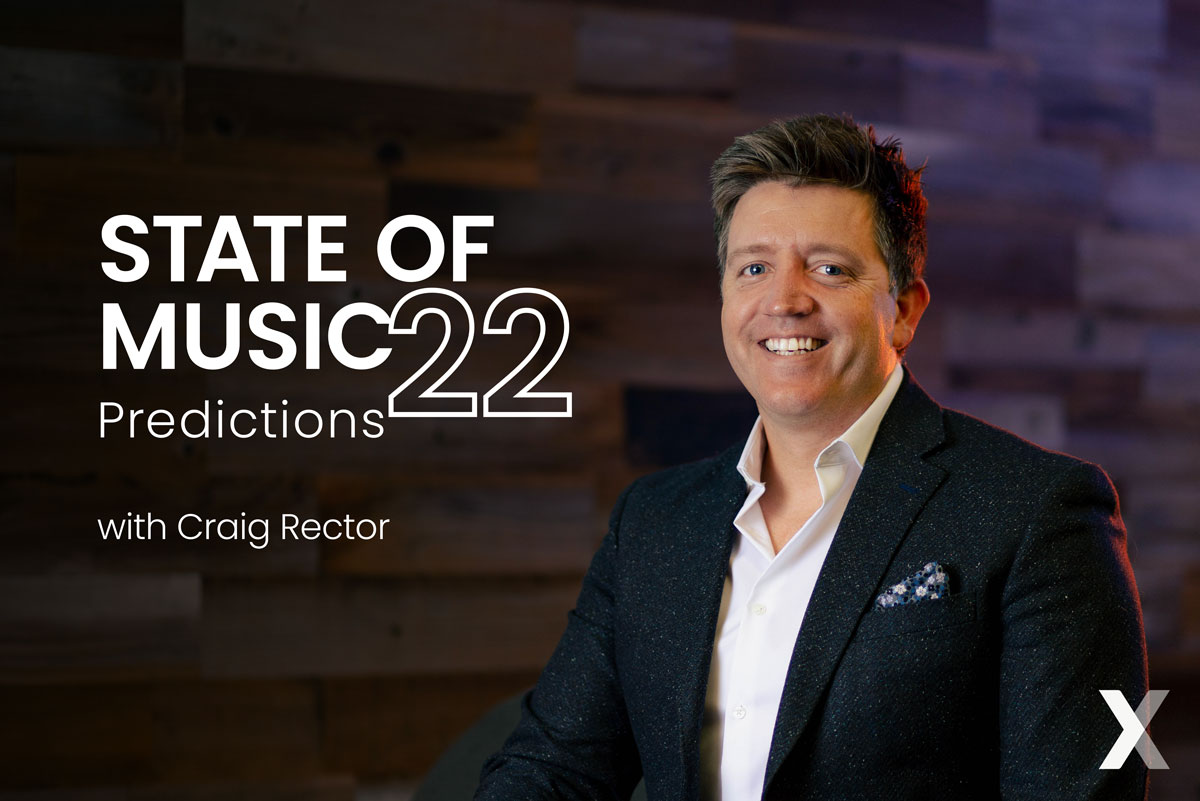
Over the past several weeks, I’ve been talking with some of our in-house experts here at MAX about their thoughts on the state of music in 2022. To wrap up this series, I’d like to further explore what I thought were some of the most compelling predictions (and give some of my own predictions) about music/marketing/social/tech in 2022.
 Craig Rector
Craig Rector
2023 UPDATE: A Look Back On 2022 With Craig Rector
"Looking at the three main takeaways I had at the beginning of the year, I think they all have proven to be accurate.
Connection & interaction are key. Use Hybrid experiences to get there.
More and more, we’re becoming a digital society, but there is still a “real” physical world. We, as users, want interaction between digital and live experiences. We keep seeing an increase in the time people spend on their phones each day (more than half spend 5-6 hours each day on their phone screen), but what does that really mean? People are rarely just on their phones–and they’re rarely just experiencing the physical world. Most of the time, we’re using our phones to learn about, interact with, record, and share the physical world around us. Mobile phones are our connection between the digital world and physical world and hybrid experiences enhance both.
Own your relationship with fans/consumers (artists and brands).
Last year when I made this prediction, we were in the early stages of releasing SET.Live. While I think we all knew we were launching something big, we didn’t have the real-world data yet to show just how much SET.Live could help artists and brands build–and own–the relationship with fans and consumers. Now that we’ve had the opportunity to see both artists and brands using it, I have a new understanding of how impactful SET.Live can be–especially for field marketers and touring artists. Seeing an established brand with a long-standing presence at an event space increase their leads by 37% just by implementing SET.Live speaks volumes.
On the artist side, we’ve seen HUGE results (like Home Free increasing their CRM by 36K+ contacts in just one tour) that impact other marketing areas (Home Free also doubled their email open rate to 65%+ after using SET.Live). This is important to artists of all levels–from artists who are earlier in their careers building stability to world-famous artists pulling value out of their fanbase to translate into fandom for their other ventures.
I’ve talked with several people outside of MAX about the importance of building first party data and owning the relationship with fans. I recently had a great conversation with Ari Herstand of Ari’s take who has been stressing the importance of artists knowing “who’s in the room” at every show they play (side note: if you’re an artist, you absolutely need to listen to Ari’s podcast and sign up to preorder his new book).
Cookies are eventually going away and depending on them is risky even while they’re still here. Brands and artists who commit to owning the relationship with fans and consumers are the ones that will thrive
Don’t chase fads.
Reading back through everyone’s predictions, we have a lot of industry and field experts here at MAX who are very in tune with the social, music, tech, and marketing worlds. The big takeaway from everyone was “don’t chase fads,” which ended up being great advice for 2022. Chasing fads often leads to inauthentic attempts to be culturally relevant that miss the point and end up harming the brand persona–and chasing fads can be an expensive mistake.
Brands dumped a lot of money into NFTs and the Metaverse and neither has really taken off. While NFTs did serve as a pathway to more widespread blockchain adoption, a lot of brands and people put too much emphasis on the NFTs themselves and not the purpose they served. The metaverse was another expensive mistake for a lot of brands: while gamers might have been ready for some aspects of the metaverse, the public at large didn’t jump on board to go shopping, visit exotic locations, or make a custom burrito that you can’t actually eat.
Overall, I think our predictions for 2022 were pretty solid and I look forward to talking to more MAXers about what they think 2023 will look like! Stay tuned . . ."
The inspiration for this series came when I was looking back over how the pandemic affected live events, shutting down concerts, forcing people to find new ways to enjoy live entertainment (and brands to rethink music sponsorship). Prior to the pandemic, brands knew how to sponsor an arena, artist, tour, or festival. Then, suddenly, brands had to learn how to get involved in a now-thriving livestream space in a way that would benefit both brand and artist. MAX has always powered these mutually beneficial brand x artist partnerships and our position at the intersection of music, tech, and marketing allowed us to help brands navigate this new space.
Over time, new tech was developed (including our SET Livestream platform, that I legitimately love watching concerts on) and brands, artists, and producers spent enough time in the livestream world to get better at it. Most importantly, though, people started to become comfortable with this tech. Virtual events that were mostly used only in the business setting became part of everyday life. Zoom became a verb (and then a meme). People began to embrace livestream concerts, even in the earlier days when production tech hadn’t caught up yet. Now, instead of (often) poorly executed, one-way video performances, we’ve seen that livestreams can be beautifully produced, interactive experiences.
Now, we’re coming out of the more restrictive aspects of the pandemic. We’ll definitely still be dealing with it for a while, but many places are lifting mandates and starting to get back to a place that I won’t call normalcy (at least not in pre-2020 terms of normalcy), but we are definitely going to see a strong resurgence of live music.
One of the things on my mind going into 2022 is the question of whether this “return to normal” will mean that we will all go back to live music and that’ll be all we care about? Or is there a new appetite for what we’ve been doing over the past couple of years in terms of virtual experiences?
Rosemary Waldrip, SVP of Marketing at MAX, predicted that changing preferences and behaviors will lead to an increase in demand for hybrid experiences. One of the benefits of livestream concerts (when done right) is that fans can connect directly with the artist and actually interact with them during the performance. People crave interaction and connection (which, coincidentally, is the main goal we’ve pursued when developing our SET suite of artist tools). When we look at the things that live experiences provide (unfiltered, physicality, excitement) and the things that digital experiences do well (ease of interaction and connection), it becomes apparent that for artists, simply creating content isn’t enough. Artists need to create connective and interactive experiences and live will need to evolve into a hybrid experience where people can both enjoy a show and interact with the artist.
I’m a gamer, so I tend to see things through that lens (and we talked some with Jeff Rosenfeld, Sr. VP Of Product And Technology at MAX about this too). When I think about what draws people to watch livestreams/gamers on Twitch, the truly entertaining part is seeing the actual person and their reactions while they’re gaming. I don’t know that people would pay as much attention to video game streams if it was just the game without a human face present, and the ability to comment, ask questions, and interact with the gamer as they play. The human connection is what makes it compelling, and this goes for artists too. Whether performing via livestream or in-person, there needs to be human connection and interaction, which can be achieved through hybrid experiences.
I didn’t get to sit down for a full interview with him, but I did get to talk with Maxwell Zotz, Head of Music & Senior Director, Artist Relations at MAX, about what we’re seeing in the live music arena now. By many accounts, live music is doing well (Live Nation reporting best ticketing quarter ever, tours selling out immediately, indicating an incredible demand for live music), but there are a couple other signals we’re seeing about the health of the live music industry.
Pre-pandemic, the lifeblood of artists’ personal revenue was touring, so when the costs of touring increase, which artists will still be able to do it? Touring might be too expensive for all but the biggest names. Over the last year, the number of artists producing content doubled. This means that there are a whole lot of new musicians making the live music landscape even more competitive. I believe that long-term appetite for live music will still be there, but there’s a lot of room to grow and mature in the livestream space.
In talking with Steve Fullbright, President and COO at MAX, one of the things that resonated with me was the parallel between Second Life and the Metaverse. We’ve seen all of the brands jumping to own a piece of the metaverse, and messaging from Meta saying that soon, all meetings will be held in metaverse, but Steve told a cautionary tale about businesses spending a ton of money and time building a virtual space that just completely flopped. For businesses, I don’t think that people will care a whole lot about any particular brand in the metaverse, but live shopping experiences where an avatar could test out products might be intriguing for people. For brand promotion, brands need to understand that there won’t be much space for a while. The people currently occupying this space are mostly gamers, a lot of them underage, and it’ll be a tough space for brands to find value for a while. In short, do your due diligence to understand how your target audience will be utilizing the metaverse, find ways to integrate naturally in the space, but don’t feel rushed to invest heavily just yet.
Steve also believes that the Microsoft acquisition of Activision Blizzard signals that the metaverse will be anchored in gaming and entertainment focused spaces and I completely agree. Like I said before, I’m a gamer. I’ve run an esports organization with a few friends and I play Roblox and Fortnite with my son. I’ve attended a lot of live virtual events already within the gaming sphere (my son loved the Ariana Grande virtual show). The events where attendance was high were definitely cool, novel experiences, but more importantly, they were interactive in more than one way. There was one virtual concert that had an obstacle course around a virtual stage that you could go play on during the show. The music was recorded (not live), but it was still a fully interactive experience and I had a blast with my son.
Another big reason that these types of virtual music events work is because they took place in this space filled with people who were already big fans of Roblox and Fortnite–people who are already kind of living in this pre-metaverse. These virtual universes already exist and people are participating in them in ways that go beyond the traditional ideas of gaming. It’s not always a combative environment you’re interacting with. There are a bunch of creative environments, like Fortnite City where you can go around and “get ingredients” to “make a recipe.” You don’t win anything, you just do it–and there are thousands of people, kids all over the world, participating in this silly task. Microsoft has the right idea: any kind of major adoption of the metaverse will take place in entertainment spaces.
Music will continue to be an afterthought in the metaverse until we find a way to have live performances from actual artists (not avatars). In a perfect world, a series of 360 cameras could allow you to “attend” a live show and actually interact with your surroundings at a concert or festival and always have the best view of your favorite artist. When VR capabilities get here, and also allow for that hybrid interactive connection, that will take live music to the next level in the virtual space.
Sean Hozumi, Co-Founder and Sr. Director of Advertising Operations at MAX, had a lot of great points about the impact of privacy and policy changes on artists and brands, but to me, the most compelling thing he talked about was testing various platforms to see what works for your brand instead of jumping on the latest trend. It’s tempting to “chase the fad” (I have friends who said Snapchat was dead a couple years ago, people say Facebook is no longer relevant, now people are saying Instagram is losing relevancy), but when we look at performance metrics, Reels often outperforms TikTok. Facebook is still the driving force for brand engagement. YouTube has the highest views for short form content. There’s no denying that there has been some crazy growth with TikTok, but from a performance standpoint, you have to test and see what performs best with your target audience. Don’t go all-in on any one platform. Test every platform and see what works for your brand. Adjust your mix to lean into ones that are most effective and constantly test and rotate out secondary platforms, tweaking content and watching to see if your audience shifts to a new platform.
When I talked with Jeff Rosenfeld, Sr. VP of Product and Technology at MAX, a lot of the focus was on artists’ (and other content creators’) growing frustration with social platforms. I’ve seen a lot of this lately (and especially on TikTok) where artists’ videos are taken down or accounts are frozen for reasons they don’t understand (and that the platforms are not taking the time to explain). Or, they can’t get their content in front of their own fans and followers. One TikTok artist I follow who creates parody music in response to news/politics (and who has millions of followers) recently released an album. When he posted to promote his album, his views plummeted. Suddenly, he couldn’t get his content in front of his viewers unless he paid TikTok to show his videos to his own followers.
In response to this, I see artists trying to push people over to Instagram from TikTok, or TikTok from Facebook, or Snapchat from Instagram, but the real problem isn’t one platform or another. The real problem is that artists are relying on publishers/platforms to push content to their audiences. Increasingly, artists are having to pay these platforms in order to show their content to their fans–fans who have already “opted in” for the artists’ content. Self promotion gets punished.
This is why it’s so important that artists develop a direct relationship with fans and own that relationship, rather than relying on social platforms. By this point, most artists are familiar with the 1000 true fans model of success. In today’s world of relationship building, that model has been supplanted by the 100 true fans model. Owning, fostering, and nurturing a direct relationship with your fans is powerful. Social media is good for awareness and engagement, but should just be the starting point that drives people to a space that you own.
I talked with Matt Henderson, SVP, Business Development at MAX, about having direct relationships with people in the changing landscape of privacy from a brand perspective. In addition to new privacy regulations, changing consumer preferences are shaping the way brands can reach people. Platforms and publishers are proactively changing their privacy practices in order to accommodate younger users who are cautious about what they are willing to accept in terms of data privacy, often leaving brands struggling to find new ways to reach their target audience.
On top of that, fluctuating prices and product offerings, the growing number of platforms, changes in data measurability, unpredictable algorithms, etc., all mean that it’ll be more important than ever for brands to have direct relationships with customers. Owning that data will allow brands to adapt to changing preferences (and the changing legal and economic environment). There will always be a need to spend marketing money on awareness, but from a brand standpoint, it’ll be vital that brands own their relationships (and the first party data that comes with those relationships) in order to efficiently use their marketing dollars.
I didn’t get a chance to sit down with our founder and CEO, Nathan Hanks, for a full interview (yet), but a couple things that were on his mind (and that we hope to dig into with him later) is that this year, there’s the potential that we’ll see a GRAMMY nominated song from a TikTok artist and an increase in fan club NFTs. I’m tempted to rant about my thoughts of NFTs, crypto, and blockchain and how all that will impact music, marketing, and tech…but I think I’ll save that for when I get to pick Nathan’s brain a little more on these topics.
After an eye opening series of interviews, my big takeaways going forward in 2022 are:
Thank you to all of our MAX experts for taking the time to talk to me about their predictions on the State of Music (and marketing/tech/social) in 2022. This was a really fun series to do. I look forward to reading all of these in 2023 and judging everyone on how accurate they were. (kidding, of course!)
My name is Craig Rector and I'm a Marketing Manager here at MAX. I’ve been a MAXer since 2017 and my focus is on the brand marketing side of our business. I'm an early adopter tech nerd, avid gamer, retired musician (Craig Alan), and a complete kid at heart. I'm in charge of our weekly newsletter, the MAXtape (which you should totally sign up for), and I can never decide whether I want a beard or not, so I’m in a constant cycle of growing it out then cutting it off!
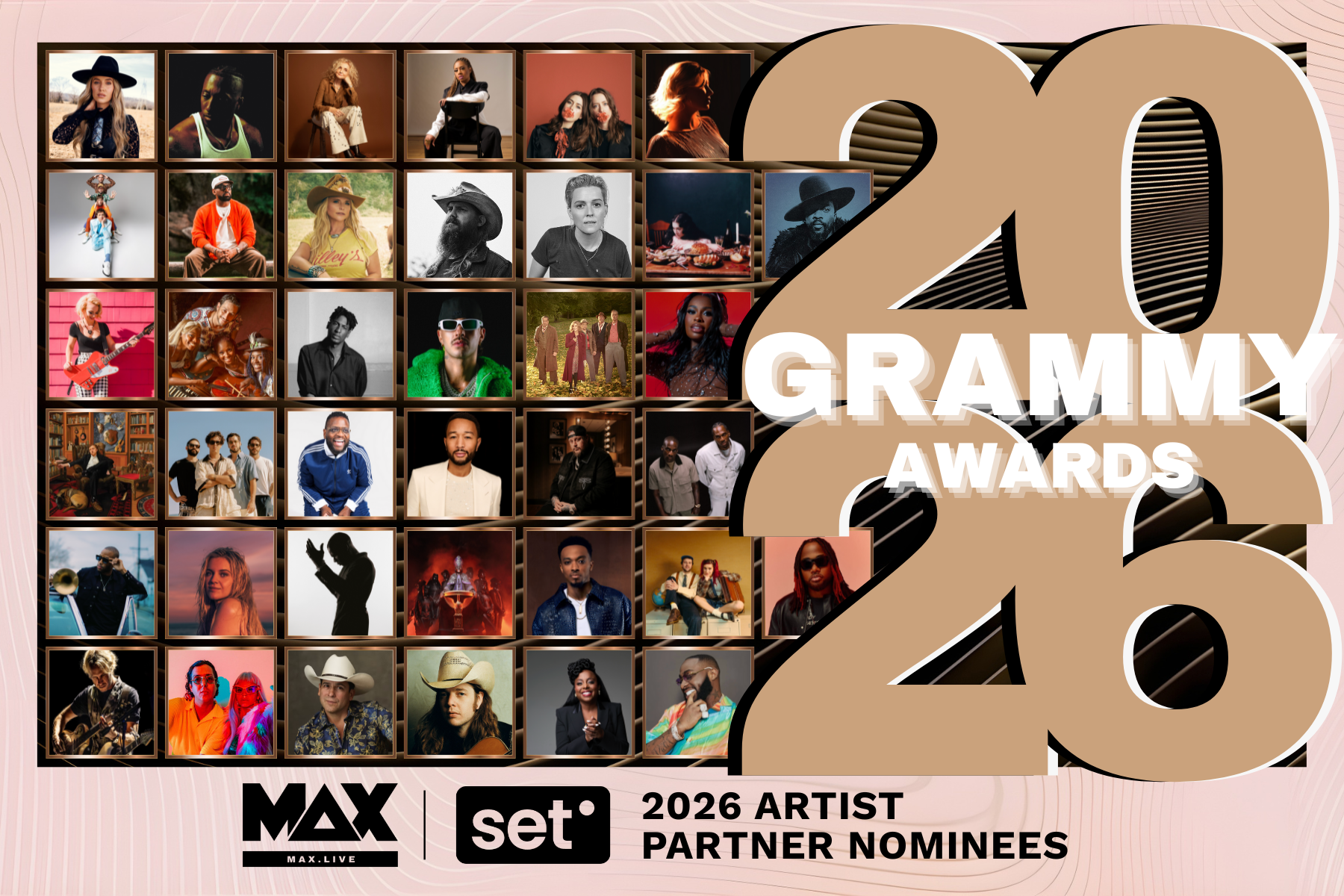
Y'all, 38 artists and 70 GRAMMY nominations is BONKERS!! Our MAX/SET artist partners absolutely crushed it this year.
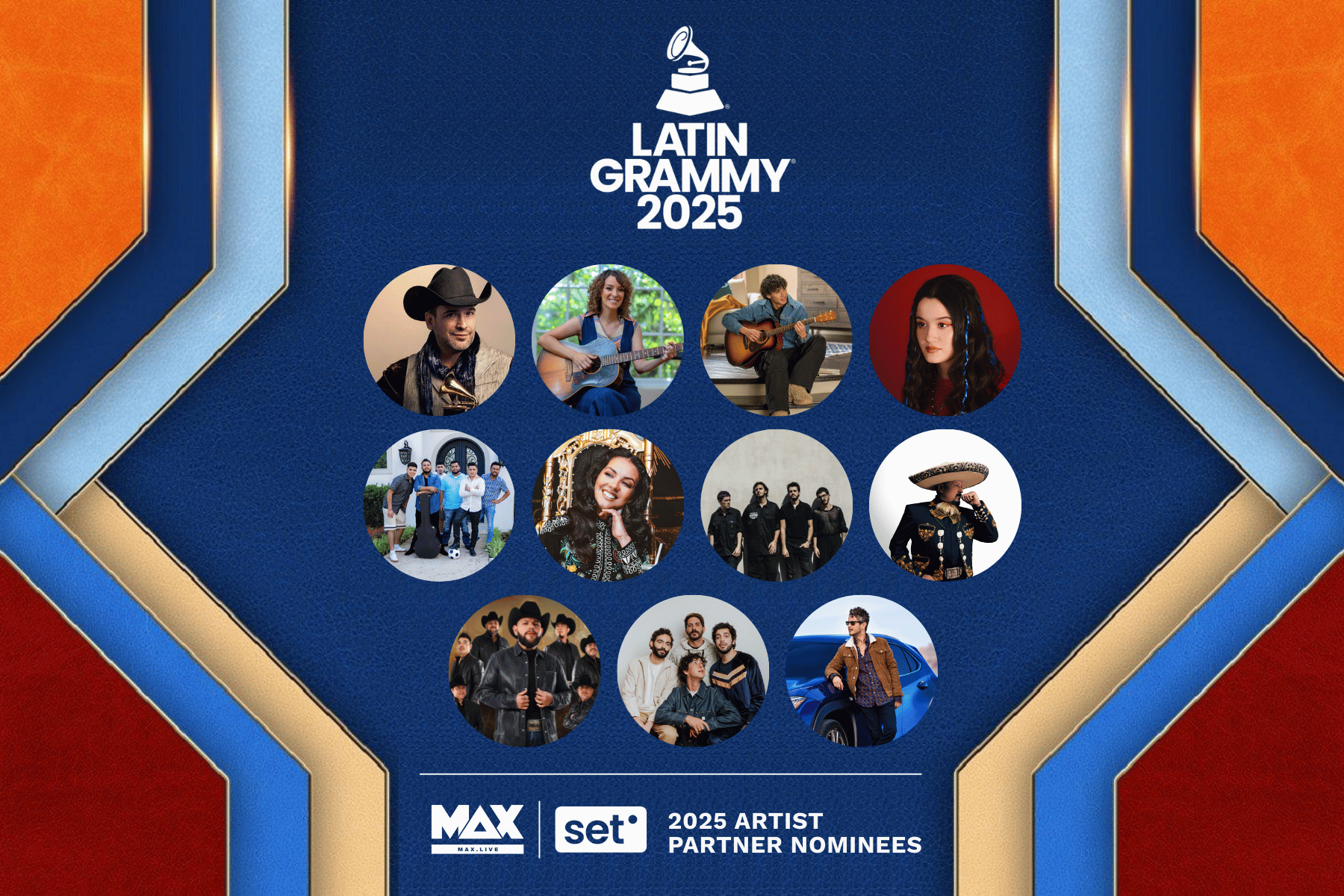
11.17.2025 UPDATE: 4 artist partners took home Latin GRAMMY Awards! 🏆🍾 The countdown has begun for the 2025 Latin GRAMMYs! On November 13, 2025,...
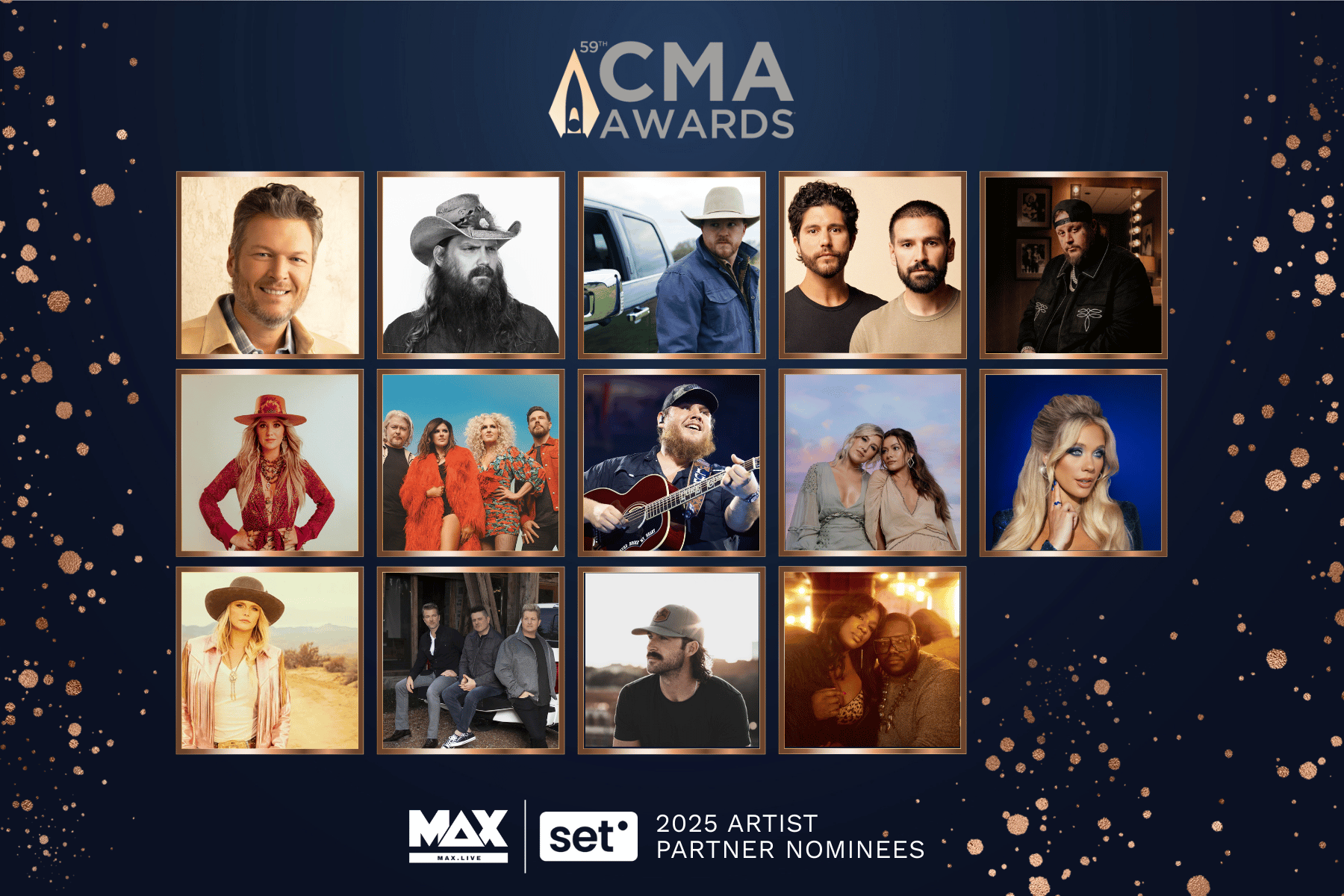
The 2025 CMA Awards, airing on November 19, 2025, will celebrate the best in country music, and we're thrilled to announce that 14 of our incredible...
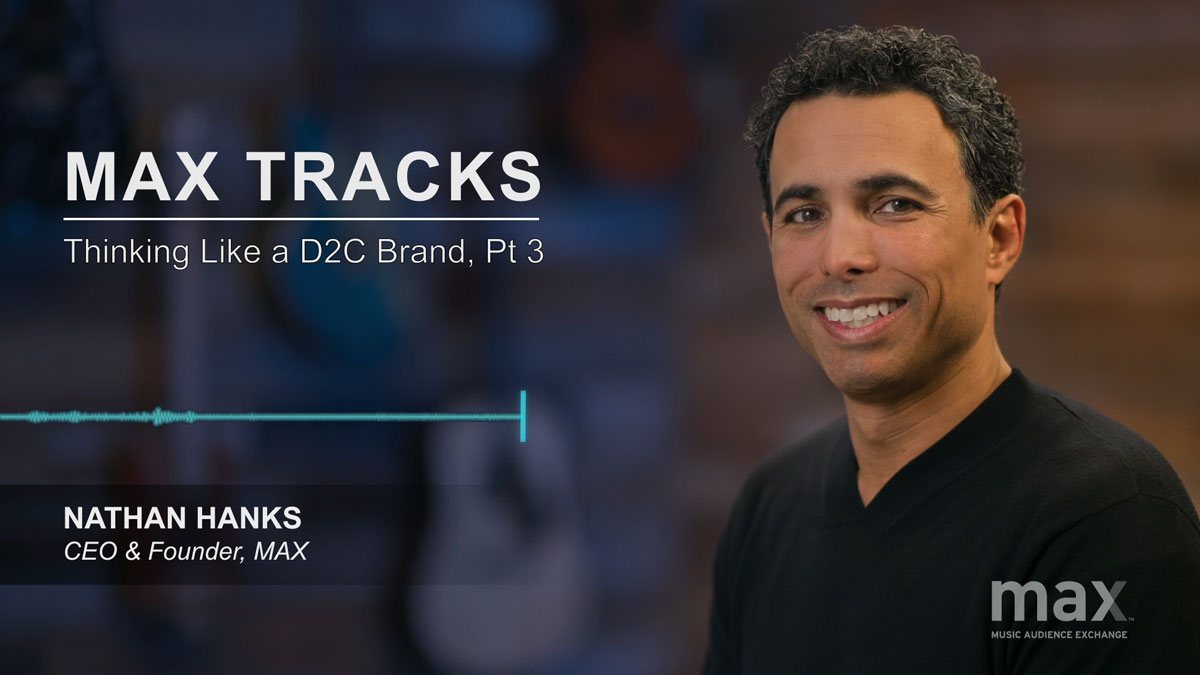
This week we wrap up our three part series on direct to consumer (D2C) brands and the marketing lessons they offer to artists. In part one we talked...
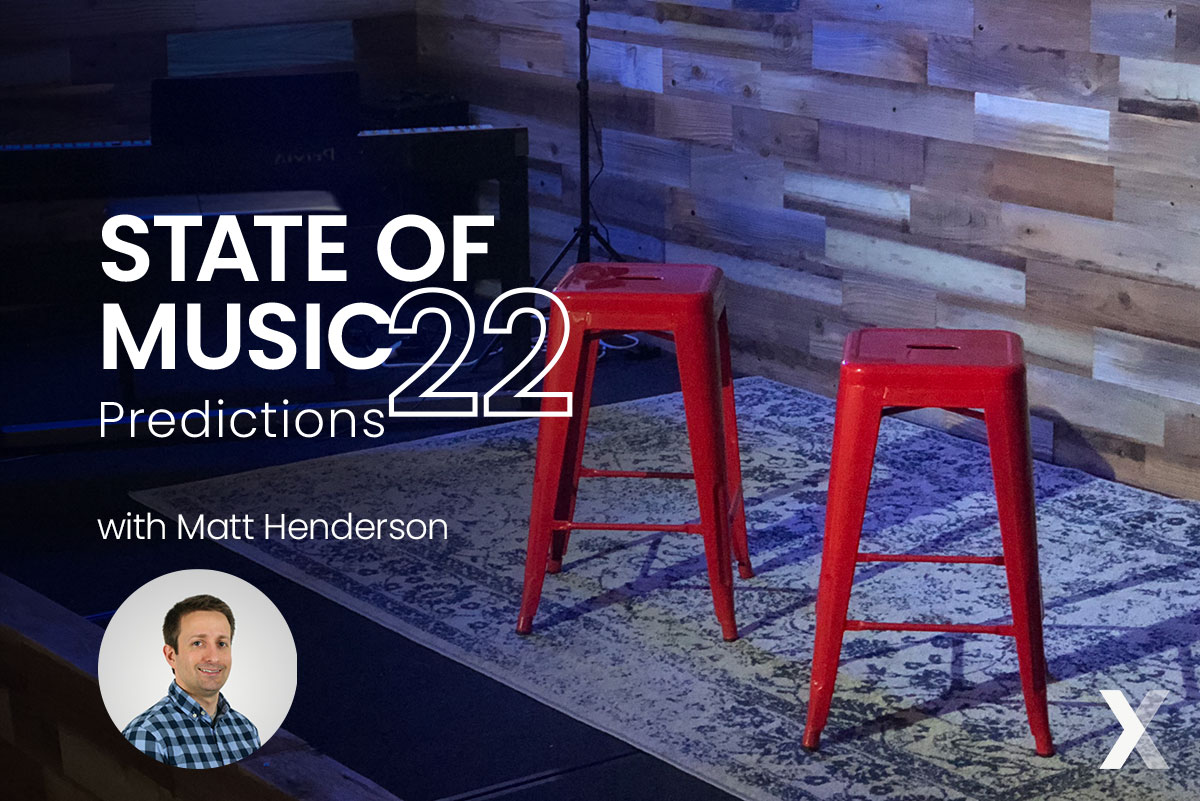
For this week’s installment of our State of Music series, we asked Matt Henderson, SVP, Business Development at MAX, to share his predictions for...
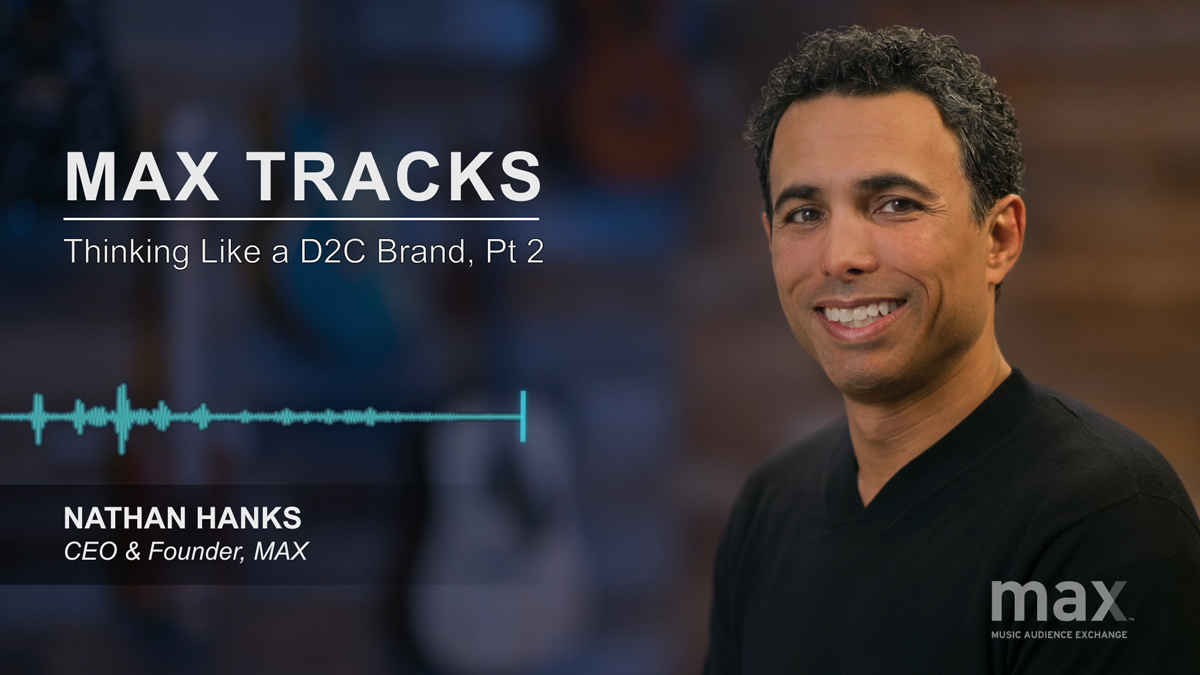
On our last MAX Track, “Thinking Like a D2C Brand, Pt 1,” we talked about direct to consumer (D2C) brands and the lessons that they offer for all of...